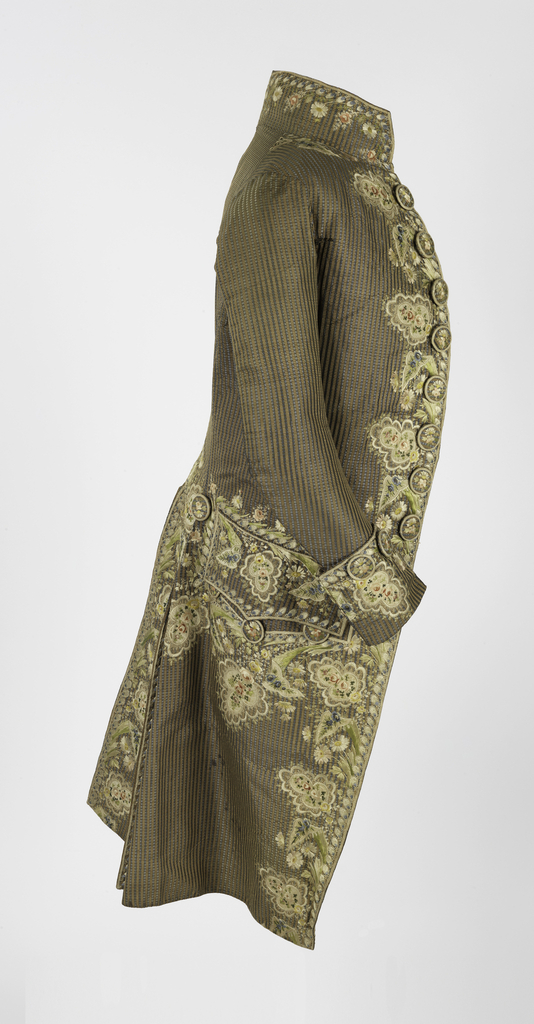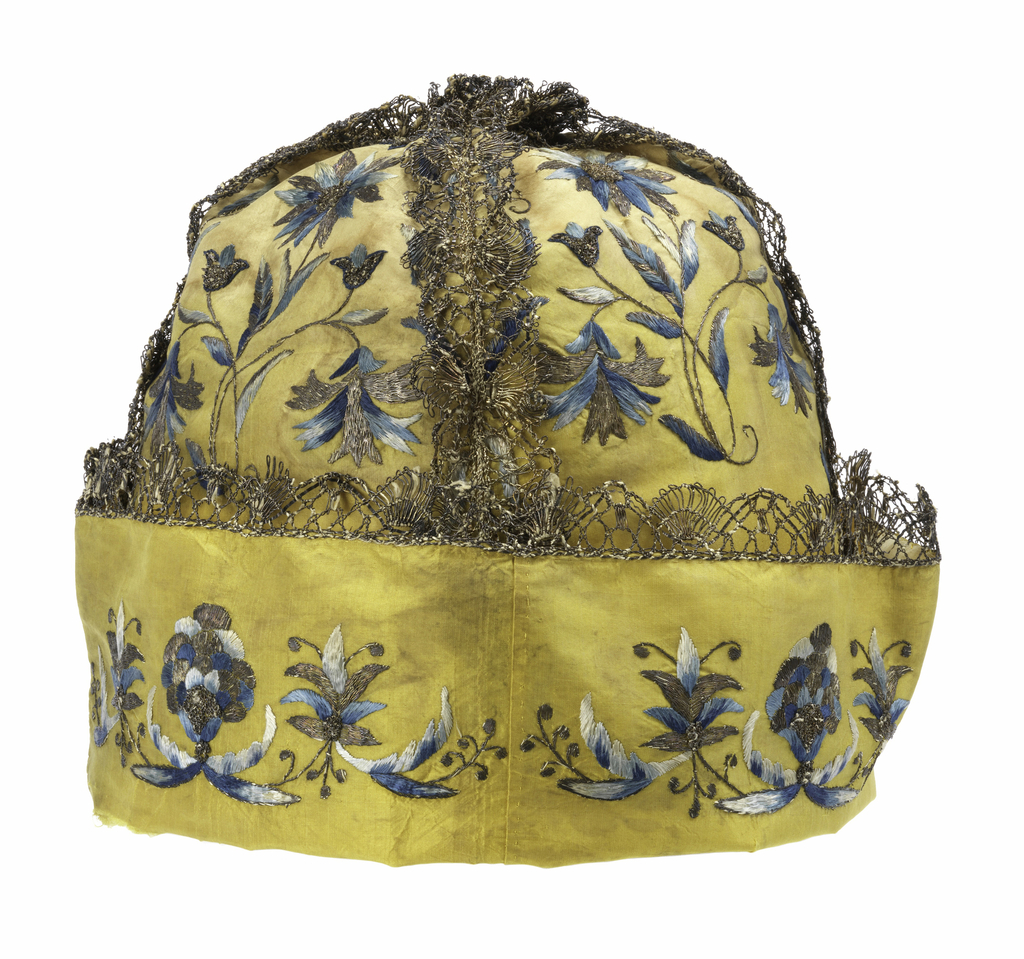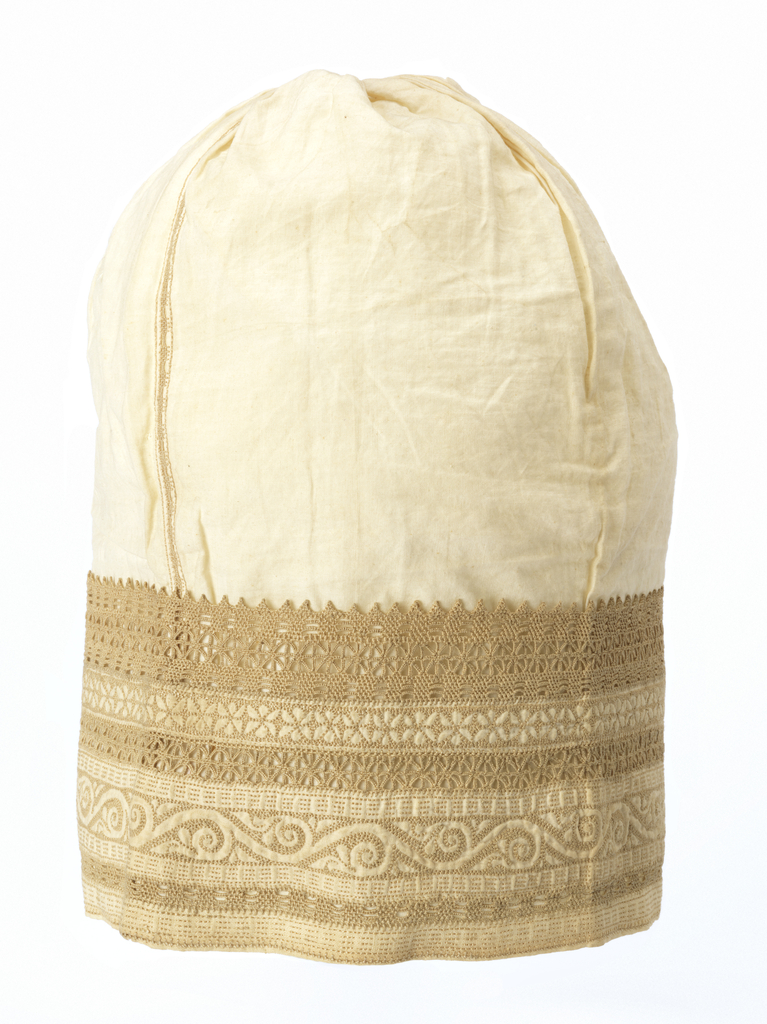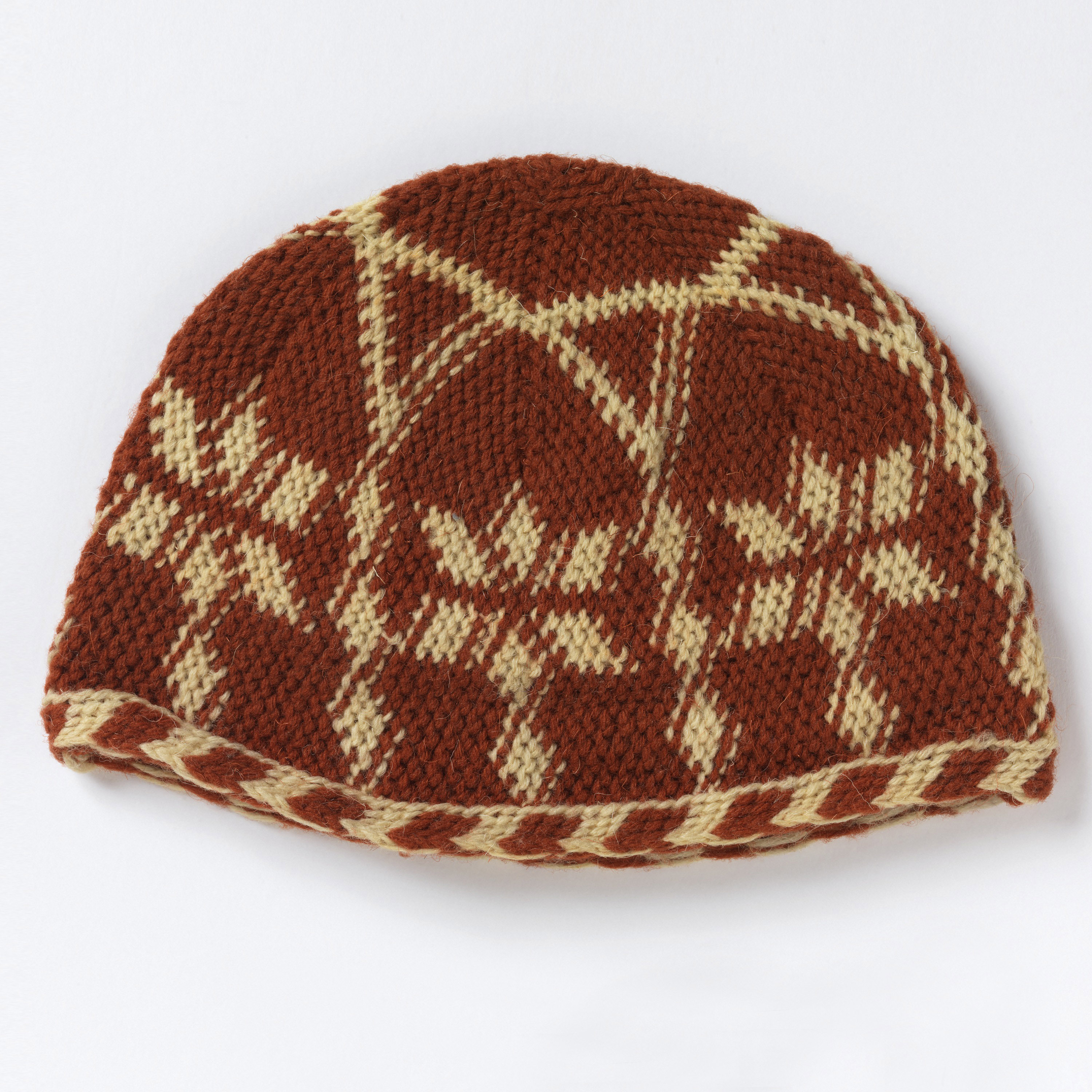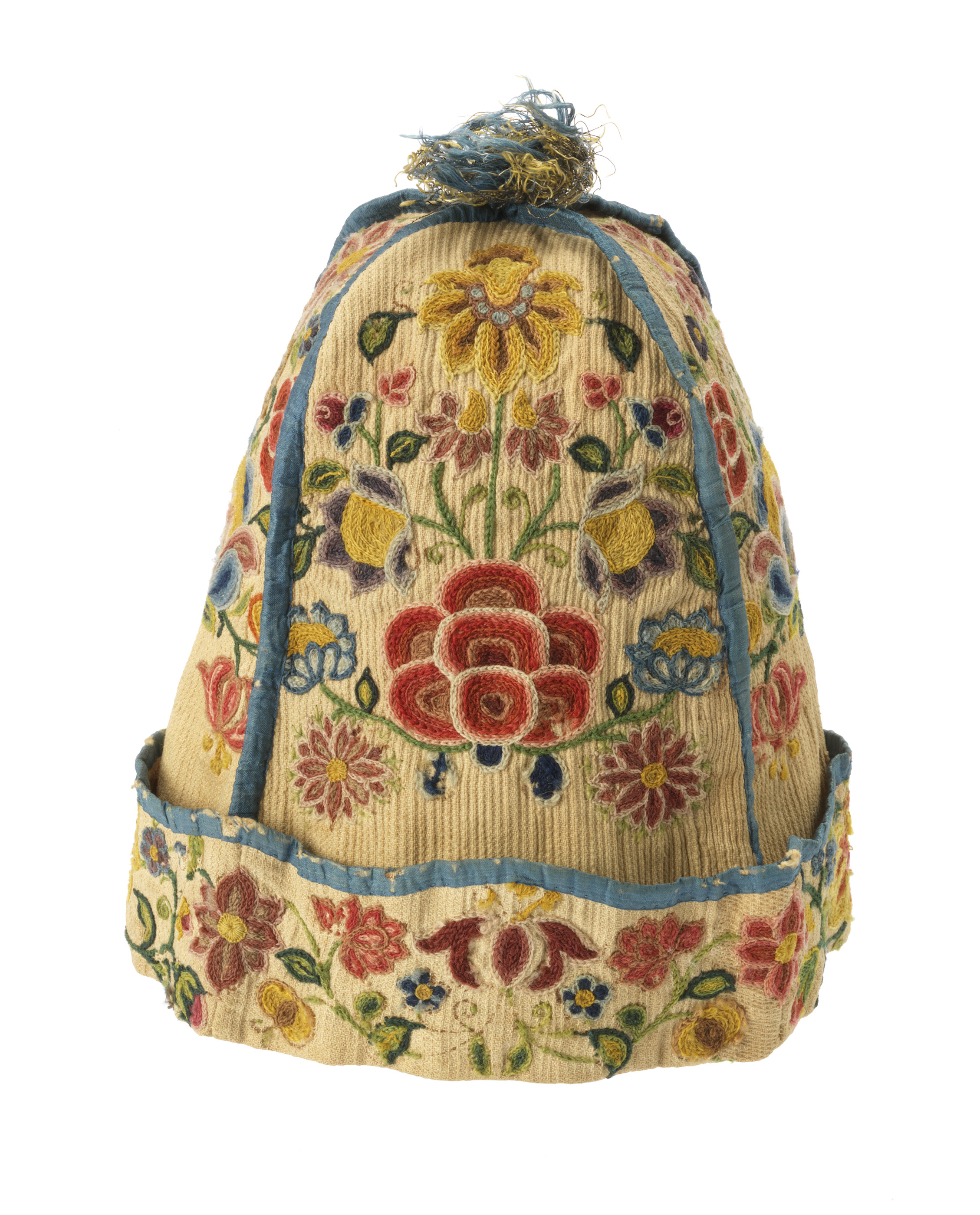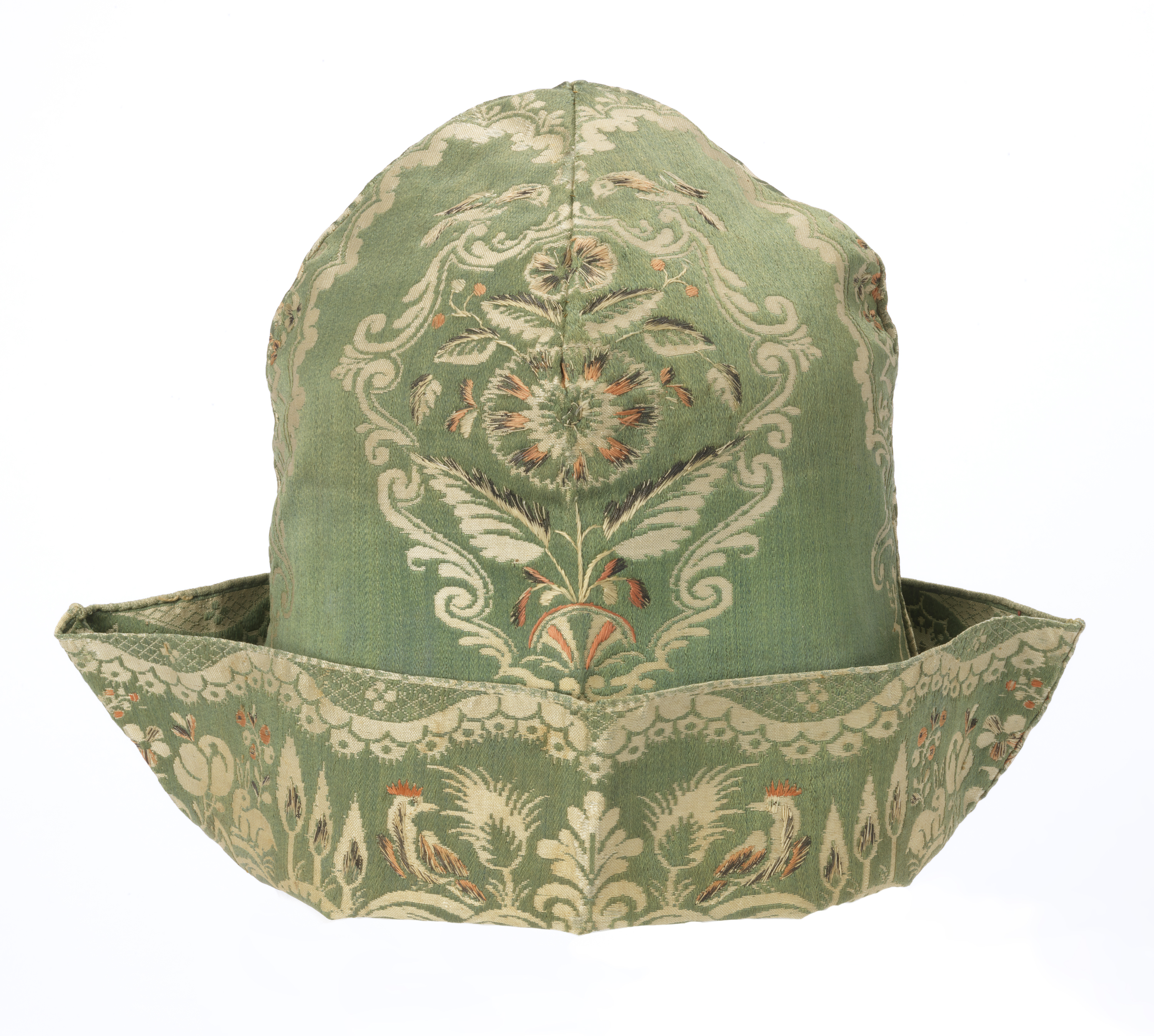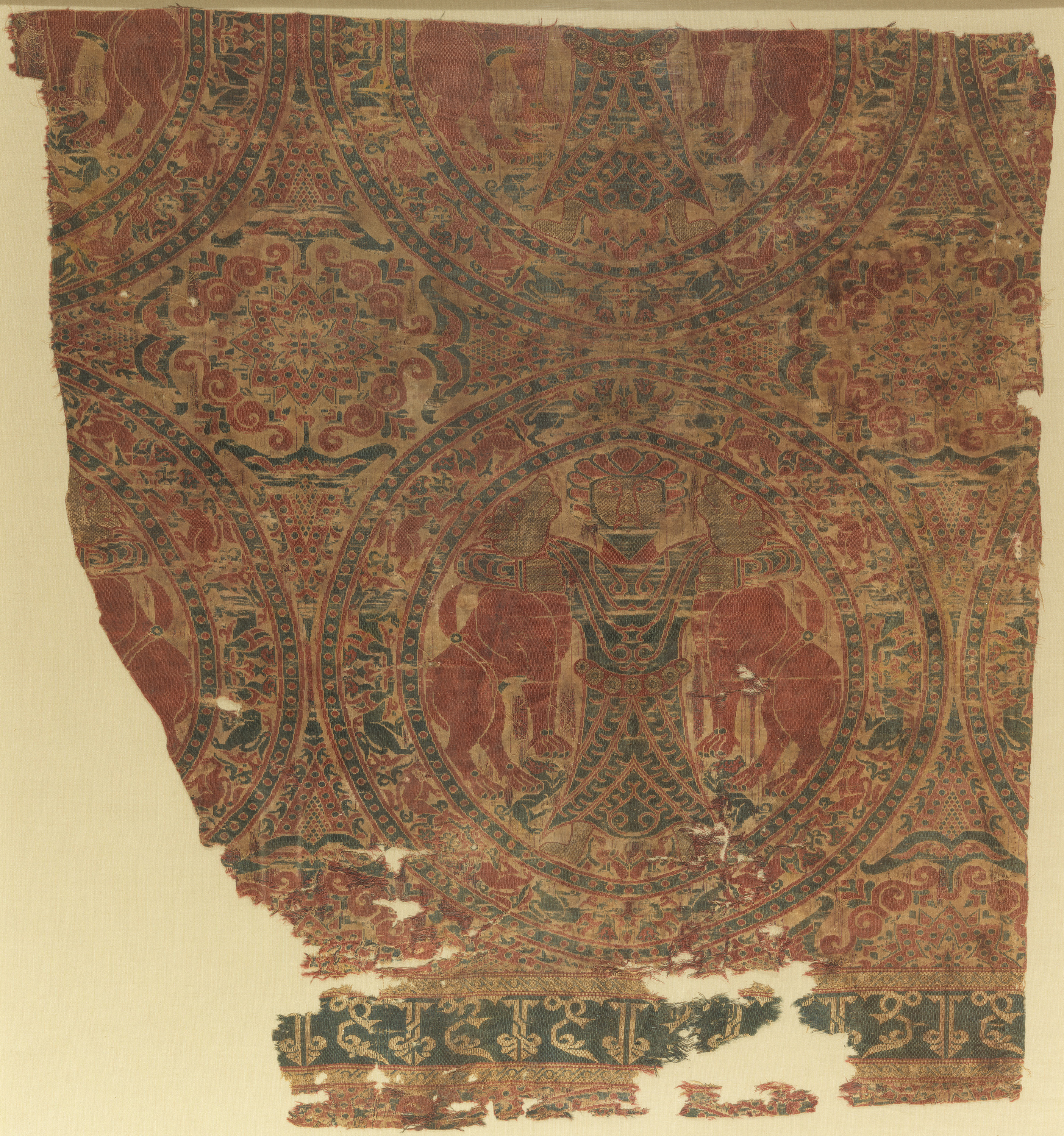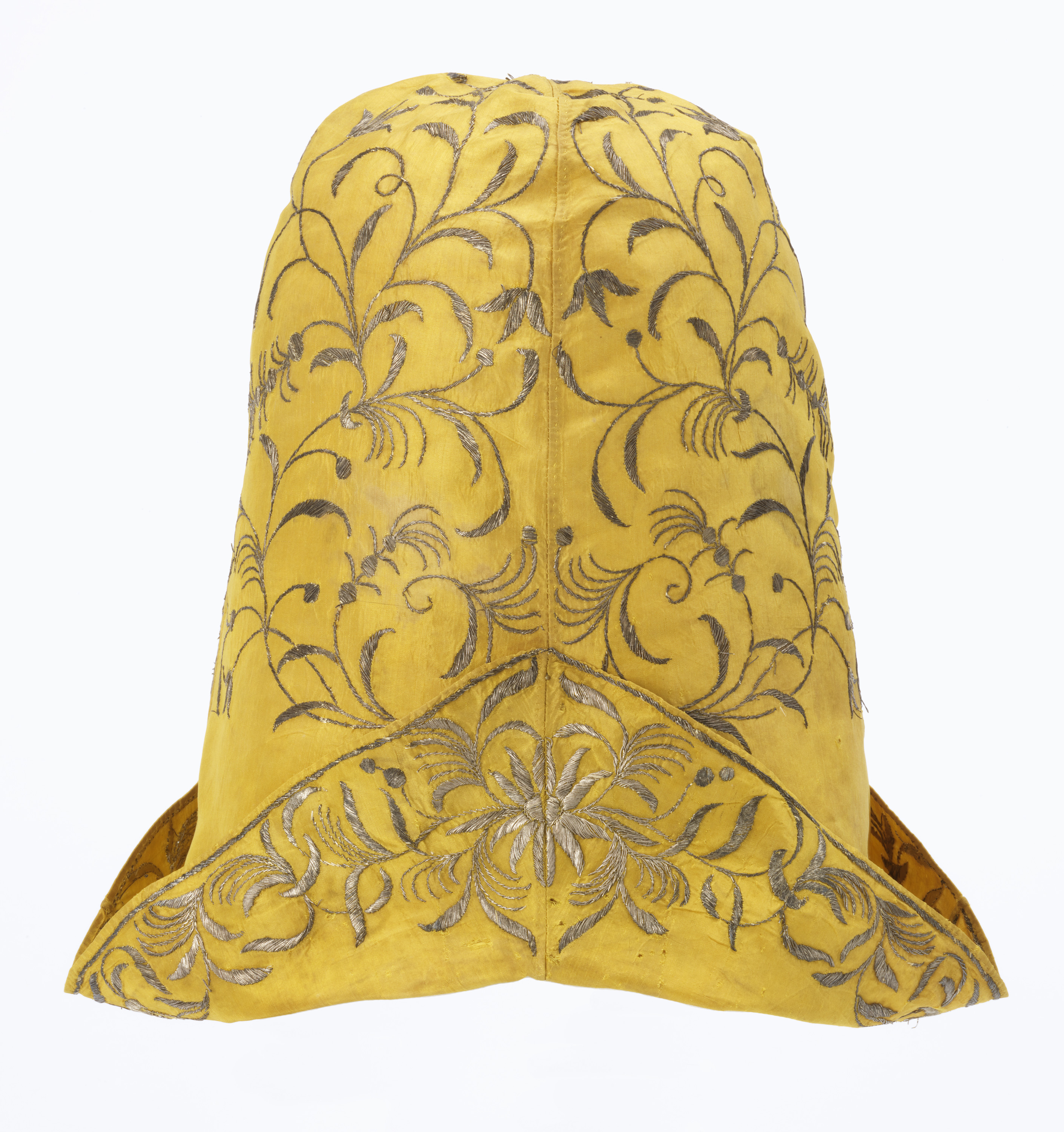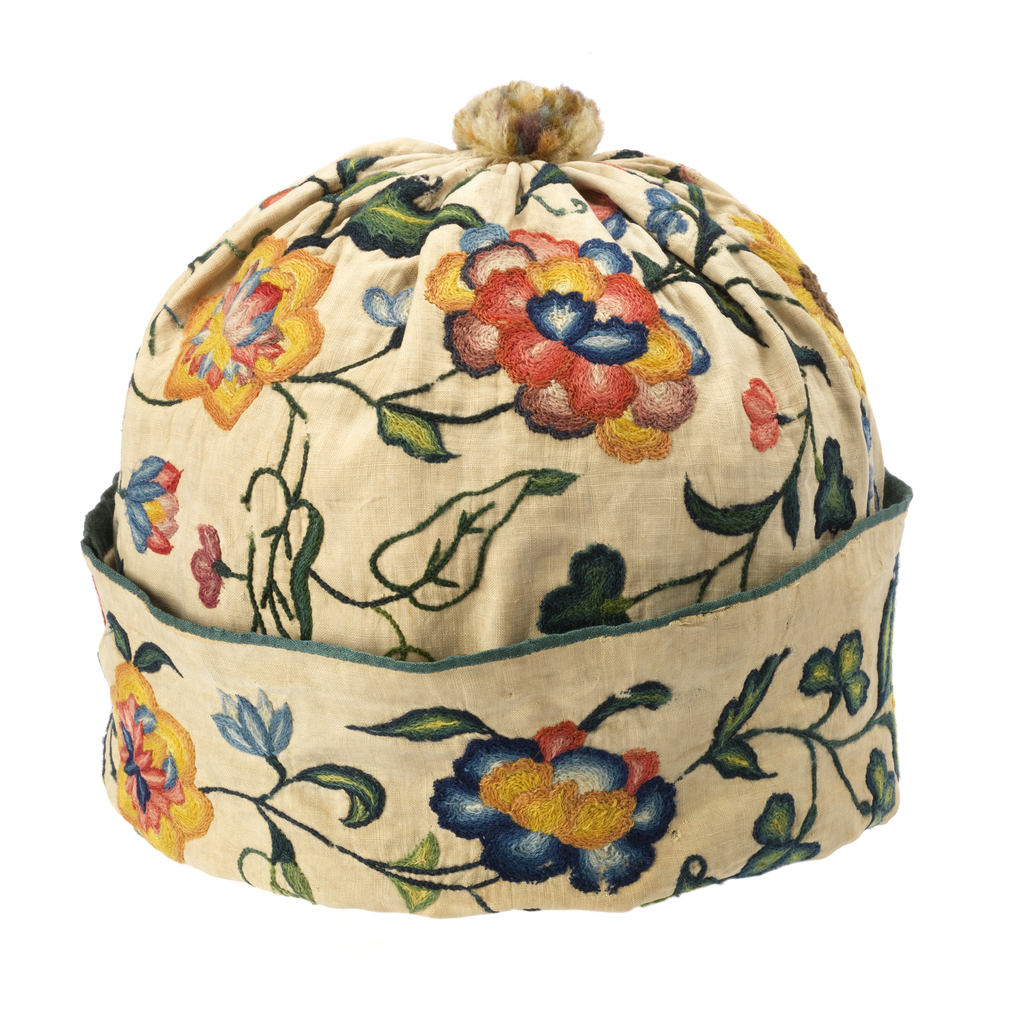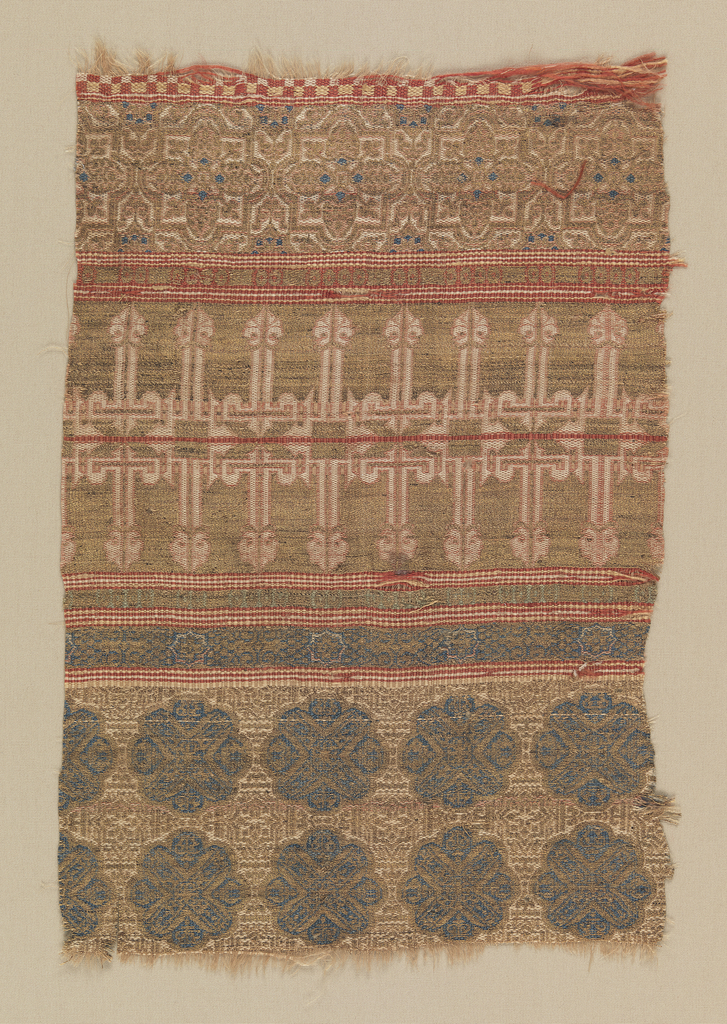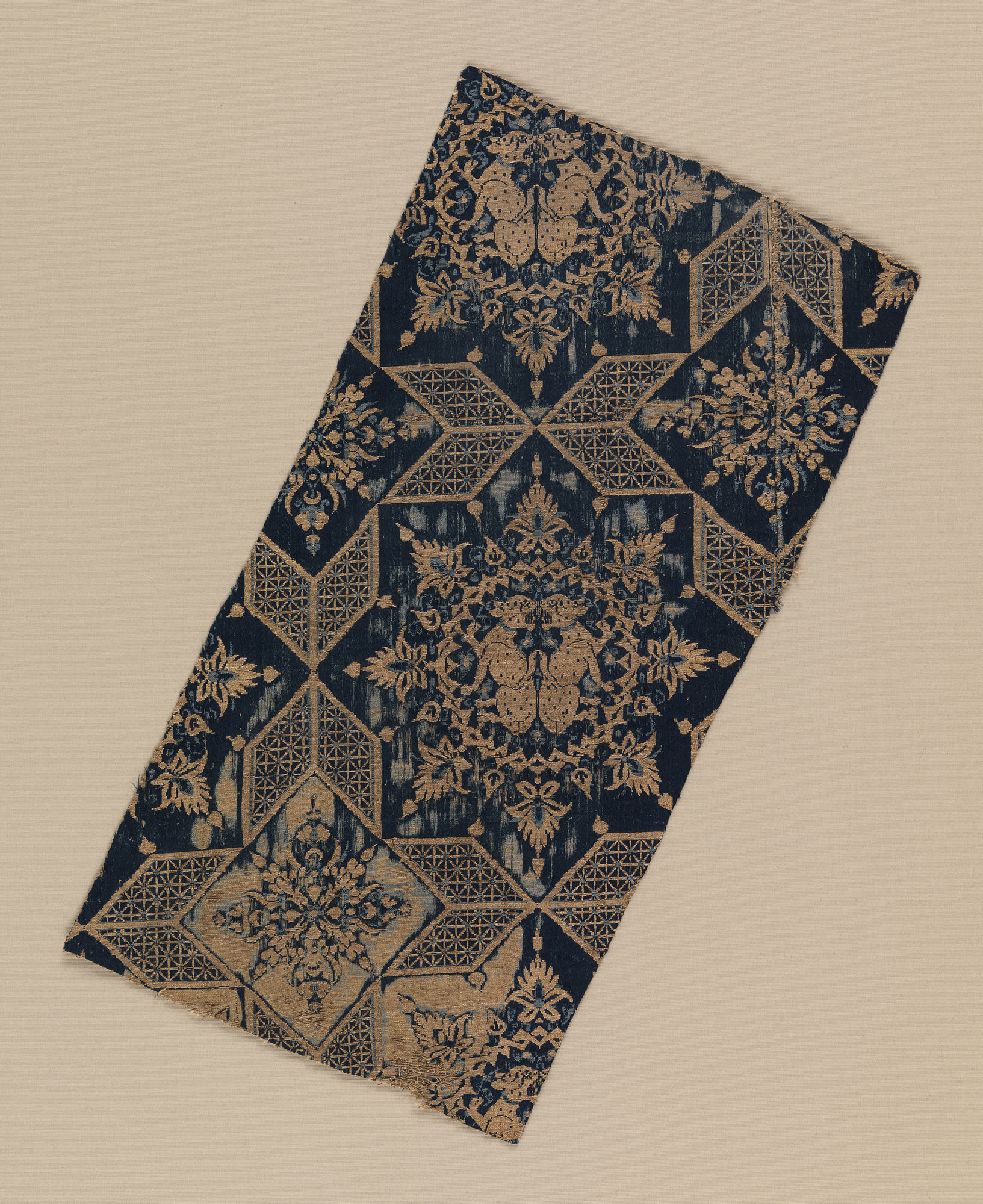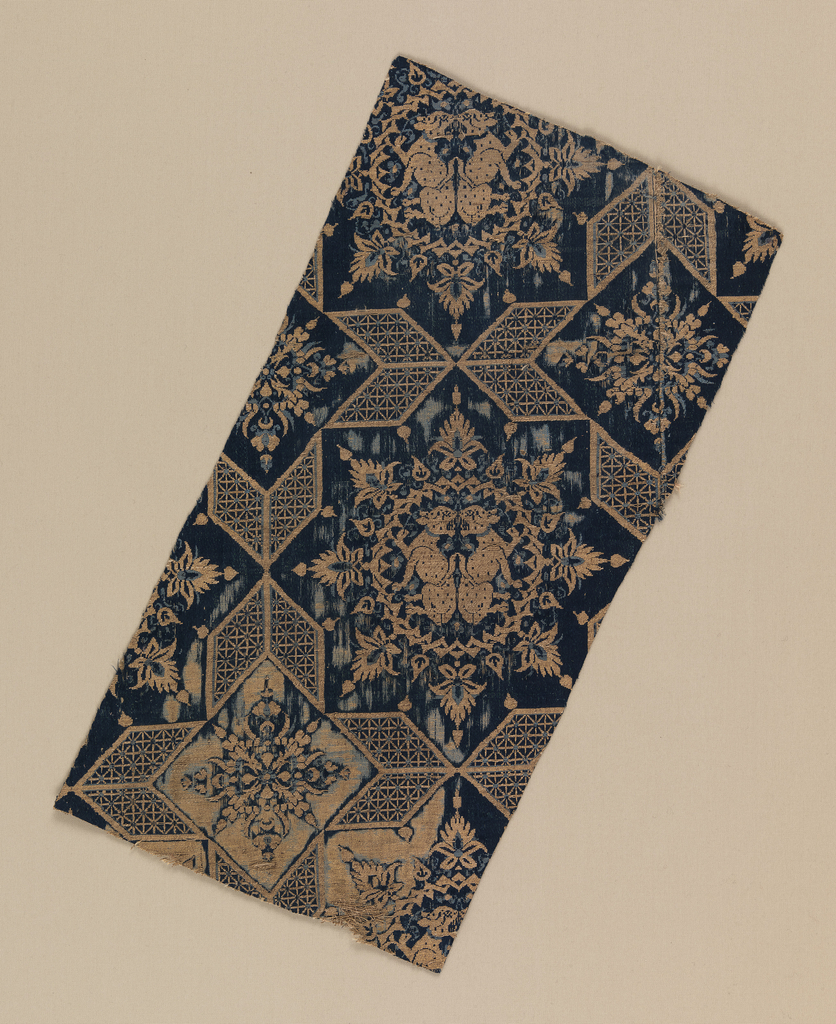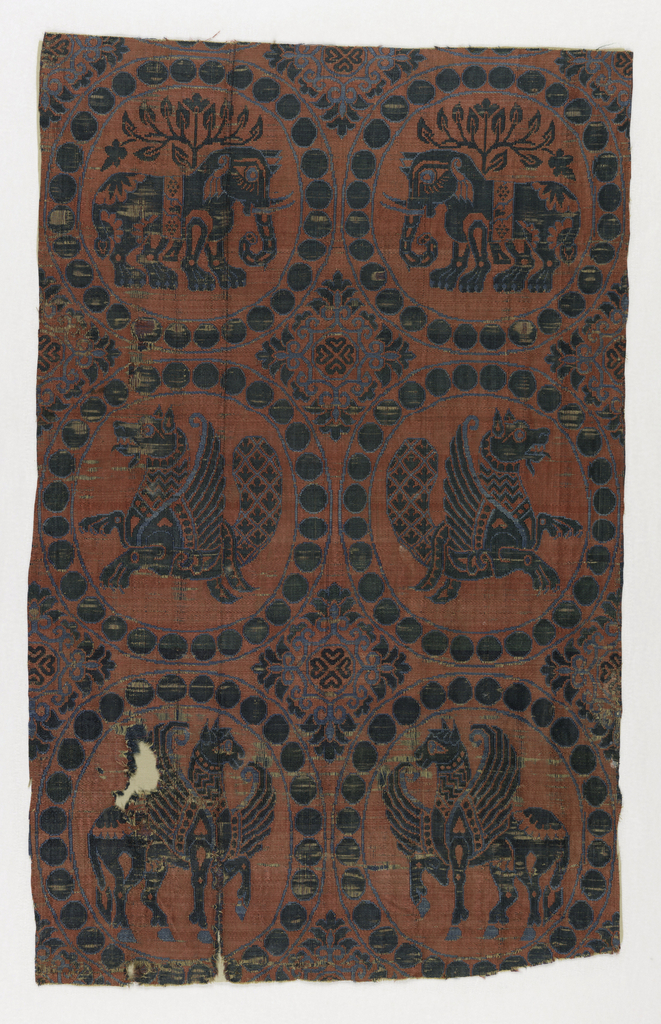This opulent coat, called a habit, was the primary component of the habit à la française, the predecessor of the three-piece suit that also included a waistcoat (vest) and breeches. This type of outfit, often rich with embroidery, would have been donned for formal events during the decades before the French Revolution. This example was...
This nightcap consists of four embroidered sections of cloth joined and bordered with braided lace made of silver-wrapped thread. The lower edge, embroidered on the opposite side, is folded up to form a brim. The style of the embroidery, which also uses silver-wrapped thread, is called chinoiserie (Chinese-esque), and includes imaginary, exotic-looking flowers that represent...
The waistcoat was the centerpiece of male costume in 18th-century France. Similar to a vest, the hip-length garment was almost always worn as a part of the habit à la française, the precursor of the three-piece suit, which included a waistcoat, a coat, and breeches. The waistcoat did not necessarily match the rest of the...
The decoration on this cap, found only on the lower edge and the single seam, accents its simple design. Wigs were commonly worn in public in the seventeenth century, and many men had shaved heads. When the wig was removed, nightcaps were worn to protect the head from drafty interiors, even during the day. They...
This wool cap, probably intended for a man, was made in the first half of the 20th century by the indigenous inhabitants of Morocco, the Amazigh people (also called the Berbers), who make up 40-60 percent of the population and have a language and culture distinct from Arabs. Amazigh textiles were mainly produced by women,...
This 18th-century hat, called a nightcap, is decorated with crewel, a wool yarn often used to embroider linen. Known as crewelwork, this technique was frequently applied to nightcaps, where it was worked into bouquets of exotic and imaginary flowers and winding stems. Similar motifs also appeared on colorfully dyed chintz, an Indian cotton textile that...
The intricate patterns on this cap precisely fit its shape, suggesting that the fabric was woven specifically for this purpose. Most likely produced professionally, the weaving, embroidery, and tailoring of caps such as this would have been completed in separate workshops. Wigs were common among men of many different social classes in eighteenth century France,...
This rare textile depicting a figure known as the “lion strangler” is a fragment of a tunic, or dalmatic, from the tomb of Saint Bernat Calvó (1180-1243) in Vich Cathedral, Barcelona. Calvó was bishop of Vich and accompanied James I, king of Aragon, during the capture of Valencia from the Moors in 1238. This textile...
This 18th-century hat is called a nightcap, but it probably was not worn to bed. A man would use this cap to keep his head warm when he removed his wig, since a wig required short hair or a shaved head. A wig was proper attire for men of almost any status in 18th century...
This red-ground textile is decorated with zigzag rows of calligraphic inscriptions including Qur’anic verses, the shahada or Muslim profession of faith, and, in the central wide band, repeated cartouches with the names of the Prophet Muhammad and Allah. Large silks like this were commissioned every year by the Ottoman Sultan, who sent them to the...
This nightcap, dating from the late 17th or early 18th century, was made using a technique called crewel, a type of embroidery worked with wool yarn on linen. Since men had shaved heads or very short hair to accommodate their wigs during this period, they wore caps like this one to keep warm after their...
This Spanish textile is a fragment of a mantle discovered in the tomb of the Infante Don Felipe of Castile (1231-1274) at the church of Santa María la Blanca in Villalcázar de Sirga, Palencia. Felipe famously led a noble rebellion against his brother Alfonso X, king of Castile, and eventually decided to seek asylum in...
This Spanish textile features confronted leopards or cheetahs within a geometric framework, an enduring motif that probably originated in early Islamic Egypt or Persia. Woven in the 15th century by Islamic weavers, this silk lampas may have been produced in Almería, a center of silk production in Andalucía and a source of blue and gold...
This Spanish textile features confronted leopards or cheetahs within a geometric framework, an enduring motif that probably originated in early Islamic Egypt or Persia. Woven in the 15th century by Islamic weavers, this silk lampas may have been produced in Almería, a center of silk production in Andalucía and a source of blue and gold...
This Spanish silk, decorated with exotic and imaginary animals in pearled roundels, was most likely woven by Islamic craftspeople in 11th or 12th-century Spain. The roundels are bilaterally symmetrical and depict, from the top down, elephants, senmurvs (composite creatures with dog heads, lion paws, peacock tails, and wings), and winged horses. Patterns, like the zigzag...
